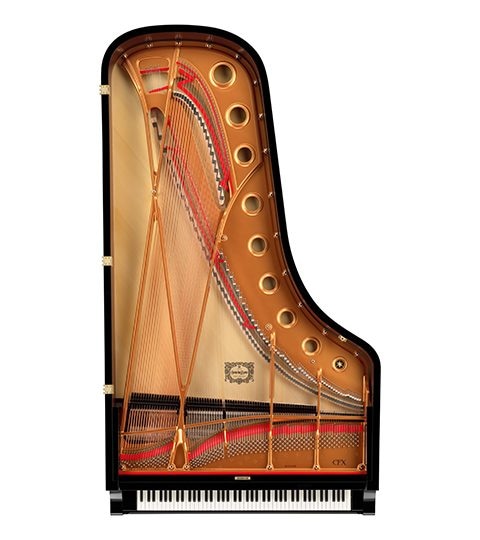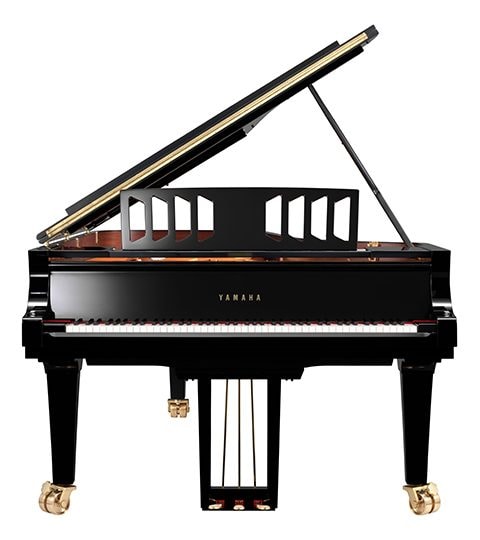Debut of New Model of CFX Yamaha Concert Grand Piano
Next-Generation Concert Grand Unites Player and Piano in Harmony
Yamaha Corporation announces that it began taking orders worldwide on March 2 for the new model of its CFX concert grand piano, Yamaha's flagship acoustic piano.
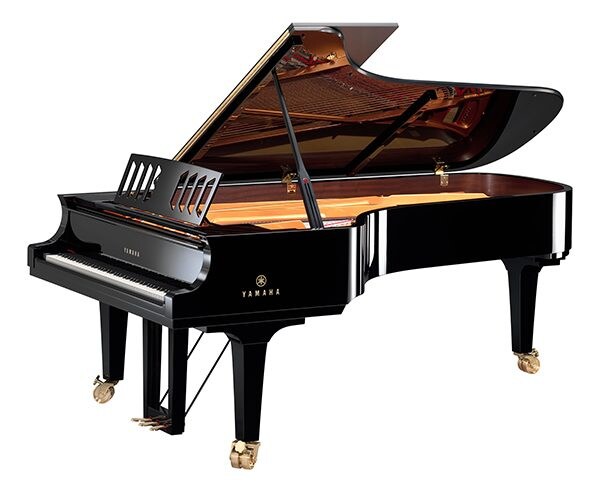
Concert Grand Piano『CFX』
This year marks 120 years since Yamaha first began manufacturing grand pianos in 1902. Ever since releasing its first-generation model of concert grand piano in 1950, Yamaha has worked tirelessly with pianists from around the world to continue improving its pianos.
As the next-generation model of the CFX concert grand piano released in 2010, this new CFX is the culmination of approximately 12 years of further development. "Crafted for Your Moment." With this concept in mind, we aimed to create a piano that would offer artists that moment when "music flows effortlessly, with player and piano in harmony, as one." Our new "Unibody Concept" design philosophy strives to unite player and piano in performance by minimizing the loss of expressivity that occurs in the translation of the striking of the keys to the sound that the audience hears. To achieve this, we optimized part materials, construction, and processing methods. For example, the rim and back posts take advantage of A.R.E.* (Acoustic Resonance Enhancement), an original wood-reforming technology developed by Yamaha, while the soundboard is now even more efficient at transforming vibrations into resonant sound. With the debut of the new CFX, Yamaha aims to rise to the top of the concert piano market based on number of units sold.
Key Features
1. New "Unibody Concept" design philosophy unites player and piano
The new CFX was developed over a period of approximately 12 years to create a piano that unites with the player in harmony, responding as if it could sense the artist's intentions. With a global network of world-class pianists and an understanding of artists' needs based on actual feedback, the Musical Instruments Development Division took a fresh look at what the ideal piano would be. All parts of the piano would be fit together carefully to minimize gaps. Part materials, construction, and processing methods were all optimized based on this new "Unibody Concept" design philosophy. The result is a piano that conveys every note, subtle color, and nuance, just as intended by the artist.
2. Rim and back posts featuring A.R.E.* offer warm, deep sound
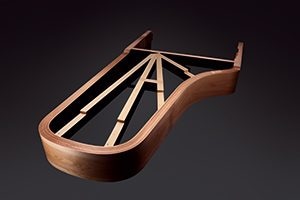
A piano's rim and back posts have a huge impact on its sound. Hand-selected beech and mahogany give the sound warmth and depth, while an integrated design ensures vibrations are transmitted smoothly. In addition, A.R.E.* (Acoustic Resonance Enhancement), an original wood-reforming technology developed by Yamaha, suppresses damping for clean vibrations. The back posts employ an innovative joint method that brings carefully machined and expertly seasoned woods together using manual adjustments for smooth, resonant tone.
3. New soundboard design offers improved vibrational efficiency and deeper, richer, more resonant mid-bass sound
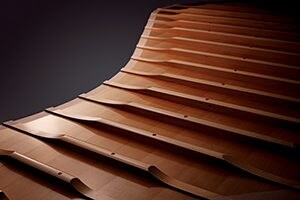
We used the top one percent of European spruce for the soundboard, which is known as the heart of the piano because of the role it plays transmitting string vibrations throughout the piano. The shape of the crown has been refined to improve vibrational efficiency and offer deeper, richer, and more resonant mid-bass sound. The width and height of the soundboard ribs has also been modified to increase dynamic range.
4. Reshaped bridge offers improved balance and projection across the entire register
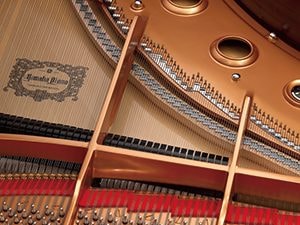
By combining maple of various types, the bridge offers sound that is both powerful and rich. Based on the redesigned soundboard, the bridge has been reshaped in the mid treble register to increase effective string length, optimizing balance across the entire register. The optimized balance between bridge thickness and string tension results in an extraordinary union of projection and richness in every note.
5. Innovated hammer production offers exceptional tone, refined keyboard action delivers more responsive touch
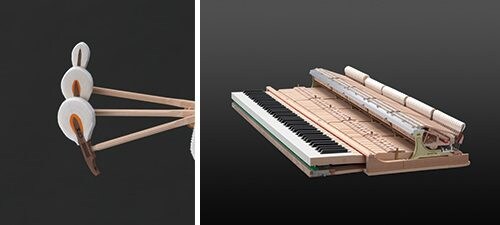
The hammers use high-quality German felt, paired with walnut for its natural ability to enhance the overall sound of the instrument. Each piece of felt is carefully shaped and bound to the hammer at the optimum temperature using a specialized in-house process to impart exceptional tone and a rich palette of sounds with more depth and nuance in each note.
Each part of the keyboard action has been refined to increase the connection between player and piano. The contact point between keyboard and action, and each parts material have all been reimagined to reduce friction from the very start. This provides a more responsive touch, from delicate pianissimo to powerful fortissimo.
6. A lighter frame with improved rigidity offers more resonant sound
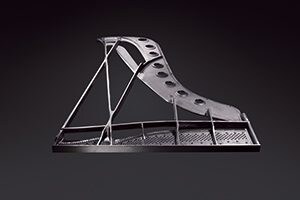
Every CFX frame is sand casted at our custom frame factory in Iwata, Japan to ensure optimal rigidity and reduced weight. New rib shape and placement of decorative holes results in even more resonant sound than before.
7. Perforated music rack made standard for the first time on a Yamaha concert grand
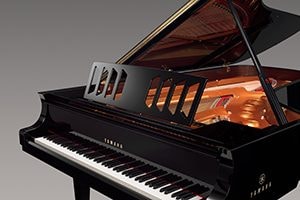
For the first time on a Yamaha concert grand piano, a perforated music rack has been made standard, allowing the artist to hear more natural sound while performing with sheet music. The number and shape of the holes have been carefully chosen to maximize delivery of sound.
Development Background
The CFX is the premier model of the CF Series, which debuted in 2010, and can be found in major concert halls and music schools throughout the world. It has also been chosen as the official piano of numerous international competitions and is beloved by countless pianists.
In order to develop a next-generation model with a focus on the artist's perspective, the design brought together around 60 people, primarily from the Piano Development Division, and included a Research & Development Team, Component Technology Team, and more. It also took advantage of Yamaha's diverse range of technologies, including A.R.E.* wood-reforming technology and state-of-the-art digital simulation technology. During the process of development, invaluable feedback from around 100 pianists was reflected in over 30 prototypes before the new model was finalized.
This is how Yamaha's skilled technicians develop an innovative design and produce a high-quality piano. At the Yamaha grand piano factory, only certain technicians are allowed to enter a Concert Piano Workshop, where they have access to experts who specialize in each part of the manufacturing process. Wood, wool, and other natural "living" materials that change over time and based on environmental conditions must be carefully evaluated and properly processed to create the finest pianos possible.
Specifications
Model
CFX
Finishes
Polished Ebony (Matte finish lid top & Prop)
Dimensions
Height: 103cm (40 1/2")
Width: 160cm (63")
Depth: 275cm (9')
Weight
485kg (1069lbs)
Hammer Action
Dedicated CFX hammer action
Number of Keys
88 keys
Key Surfaces
White: Ivorite
Black: Ebony
Key Cover
Soft-Close Fallboard
Pedal
Shift/Sostenuto/Damper
Lid
Prop Safety Stop
Music Rack
Perforated Music Rack
Casters
Large double casters (all wheels have stoppers)
Notes
*Acoustic Resonance Enhancement (A.R.E.) is an revolutionary wood-reforming technology developed by Yamaha to season woods in a short period of time, making them sound like woods in instruments that have been played for years. By using special equipment to precisely control temperature, humidity, and atmospheric pressure, newer woods can be manipulated to produce richness and depth of sound similar to that of woods in instruments that have been played for years. The A.R.E. process also uses no chemicals, resulting in a reduced impact on the environment. In addition to pianos, this technology has been used on guitars, violins, and other stringed instruments, as well.
Concert Grand Piano『CFX』

